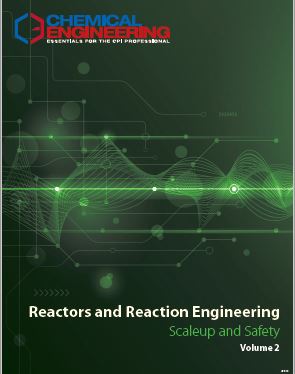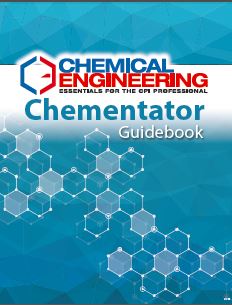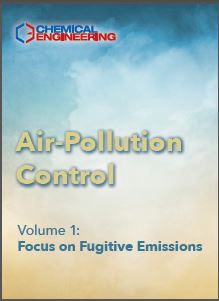Description
Scaleup and safety are two important issues for chemical engineering designing, operating and maintaining reactor-driven systems to convert raw materials to intermediate and finished products. This Chemical Engineering Guidebook features a collection of tutorial-style engineering articles that provide useful tips and best practices for the selection, design, operation and maintenance of reactor systems.
Content provides technical guidance for scaling up reactor-based systems, from concept to commercial-scale production. Several articles focus on issues related to batch production and discuss making the move from batch to continuous production.
Safety-related topics focus on pressure management and overpressure protection, disaster preparedness, physical and cybersecurity, and materials selection. Also included is a selection of Technology Profile articles which give detailed discussion on relevant reactor-based chemical conversions that have commercial importance to chemical process industries facilities.
Delivered in a PDF format, 132 pages.
Articles Include:
LDPE via a High-Pressure Tubular Process
A Checklist for Safer Chemical Batch Reactions: A good understanding of the reaction chemistry is needed for a safe process design
A Safety Checklist for Laboratories: These nine best practices for managing change in laboratories can help ensure a safe workplace
Diammonium Phosphate Production
Methionine Hydroxy Analog Production
Eye Protection, Part 1: Beyond Basic Eye Safety
Eye Protection, Part 2: How to Avoid Fogging
Bio-based Adipic Acid Production from Glucose
Butene via Ethylene Dimerization
Maleic Anhydride from n-Butane (Fixed-bed Process)
Considerations for Estimating the Costs of Pilot-Scale Facilities: The differences between industrial-scale facilities and pilot plants go beyond size, and these intricacies must be understood when estimating the costs associated with pilot-scale facilities
MTBE Production from C4 Raffinate-1
Disaster Preparedness at Manufacturing Facilities: Development of robust preparation and response procedures can help chemical plants to weather disaster events and return to normal operations in a safe and efficient manner
Accelerating Process and Product Development: These simple strategies can be used to speed up and increase the success rates of R&D projects
Managing Small and Medium-sized Capital Projects: A real-life example is provided to show how to stay on program and within budget
The Road to Commercialization: Best Practices: Experts share their best practices in process commercialization
Activated Carbon Production
Plant Functional Safety Requires IT Security: Cybersecurity is critical for plant safety. Principles developed for plant safety can be applied to the security of IT systems
Avoid Safety Pitfalls During Plant Expansion and Modification: Follow this guidance to minimize risk when adding or modifying plant equipment
From Concept to Commercial Production:These four steps of process development are typically necessary to effectively scale a concept into full production
Materials Selection in the CPI: An overview of the many factors to be considered when selecting materials of construction
Hydrogen Peroxide Production
Sodium Lauryl Ether Sulfate Production
Propane Dehydrogenation: Oxydehydrogenation
Pressure-Relief System Design: Developments and Deficiencies
Sizing Pressure-Relief Valves for Two-Phases: Several methods are available for sizing two-phase pressure relief vales (PRVs). Here, the AP 520 homogeneous direct integration method is compared to a potentially simpler alternative that does not require integration
Isopropanol Production from Propylene
Ethanol from the Direct Gasification of Biomass
Optimizing Pressure Relief Systems: Alternative designs for pressure relief systems may offer investment cost savings
Connecting Operations Personnel to Reliability Efforts: Seven methodologies are described to help operations staff take greater ownership of asset performance
Piping Design for Potentially Lethal Chemicals: Integrity and reliability are critical for piping and equipment that handle chemicals with extreme health hazards
D,L-methionine production via the carbonate process
Emergency Shutdown Valves: A Functional Safety Approach to Selection: The relationship between valve selection and safety certification still causes confusion. A focus on functional safety can help to elucidate
From Batch to Continuous Processing: Continuous flow reactors can provide many benefits over batch processes. This article answers why and how
Reactive Chemistry in the CPI: Improper handling of reactive chemicals can result in catastrophic industrial disasters, and a clear understanding of these materials is essential for safe process-design practices
Vinyl Acetate from Acetic Acid and Ethylene
Production of Polylactic Acid
1,4-Butanediol from Bio-Succinic Acid




